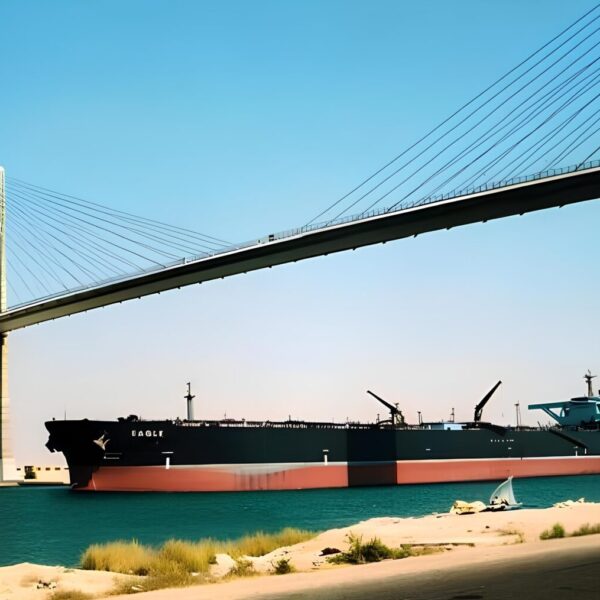The Suez Canal, a vital artery of global maritime trade, is the shortest route between Europe, the countries of the Indian Ocean, and the western Pacific Ocean. It is the beating heart of commerce and remains the busiest shipping route in the world. It is a major strategic issue with over 12% of global trade* passing through this passage.
Built between 1859 and 1869, this artificial canal, 193 kilometers long, which connects the Mediterranean Sea to the Red Sea, played a crucial role from its inception. An ambitious project led by the French engineer Ferdinand de Lesseps, aimed at shortening the distance between Europe and Asia, it is marked by the influences of the Saint-Simonians and the Marseille Chamber of Commerce. The former see it as a project in line with their utopian theory and their goal of building a "Mediterranean system" based on transportation. The latter see tremendous opportunities for economic development.
Utopian Vision
The movement of the Saint-Simonians, inspired by Henri de Saint-Simon in the early 19th century, played a decisive role in the conception of the Suez Canal. This intellectual and social movement advocated for a utopian vision of progress and solidarity. It also emphasized technical advancements for the service of humanity. For the Saint-Simonians, the realization of large infrastructure projects, such as the Suez Canal, embodied this vision of modernity where nations would be interconnected through industrial achievements.
Diplomat and Engineer
It is, however, thanks to the vision of Ferdinand de Lesseps that the construction of the Suez Canal became a reality. A diplomat and engineer, he was the principal architect of the project. After serving as France's consul in Egypt, Lesseps gained an intimate knowledge of the terrain and the geographical challenges of the canal, allowing him to design the project with great technical precision. This colossal undertaking would shorten the journey between Europe and Asia by nearly 7,000 kilometers, thus avoiding the detour around Africa.
Central Position
Over the years, the Suez Canal has played a major strategic role in global geopolitics. Due to its central position between two seas and its direct access to global shipping routes, it is regularly at the heart of international tensions.
Its management has been marked by international tensions, particularly regarding British control of the region in the early 20th century and the nationalization by Egypt in 1956 under Nasser, leading to the Suez Crisis. The canal has also been, over time, a playground for great powers, symbolizing the struggle for dominance in the region.
These crises have often stemmed from the economic interest generated by the canal, and even today its weight in the Egyptian economy is undeniable. Each year, it generates substantial revenue for the country (€8.9 billion in the 2022-2023 fiscal year) thanks to the tolls paid by ships. However, since the recent conflicts in the Red Sea, the Suez Canal has recorded a drop of over 60% in its activity compared to 2023, resulting in a loss of nearly €7 billion.
Beating Heart
Dr. Moustafa Badra, an economic expert and specialist in the Suez Canal, explains that this global navigation route, while accelerating international trade, also sharpens appetites. "The Chinese, for example, have demanded the passage of the Suez Canal in their New Silk Roads project. But they are not the only ones. Egypt has concluded agreements to build a logistics storage area in the coming years, with China again, but also with some European countries. This reflects the crucial importance of the Suez Canal for logistics transport and global navigation," he states.
"Furthermore, the digging of the new Suez Canal (from km 60 to km 95) has greatly contributed to facilitating the transit of ships in both directions, without stopping in waiting areas. This doubling has consequently reduced the transit time of ships by more than eleven hours." Dr. Badra finally emphasizes that the Suez Canal Authority has concluded agreements for the use of green hydrogen to reduce pollution and increase the capacity of ships."
This passage will never lose its influence, as long as it remains a vital link between continents and a crucial source for global supply.
* Figure from the Suez Canal Authority

Featured Photo: A Cargo Ship passes under the Al Salam Bridge that spans the canal between Port Said and Ismailia © Suez Canal Authority
